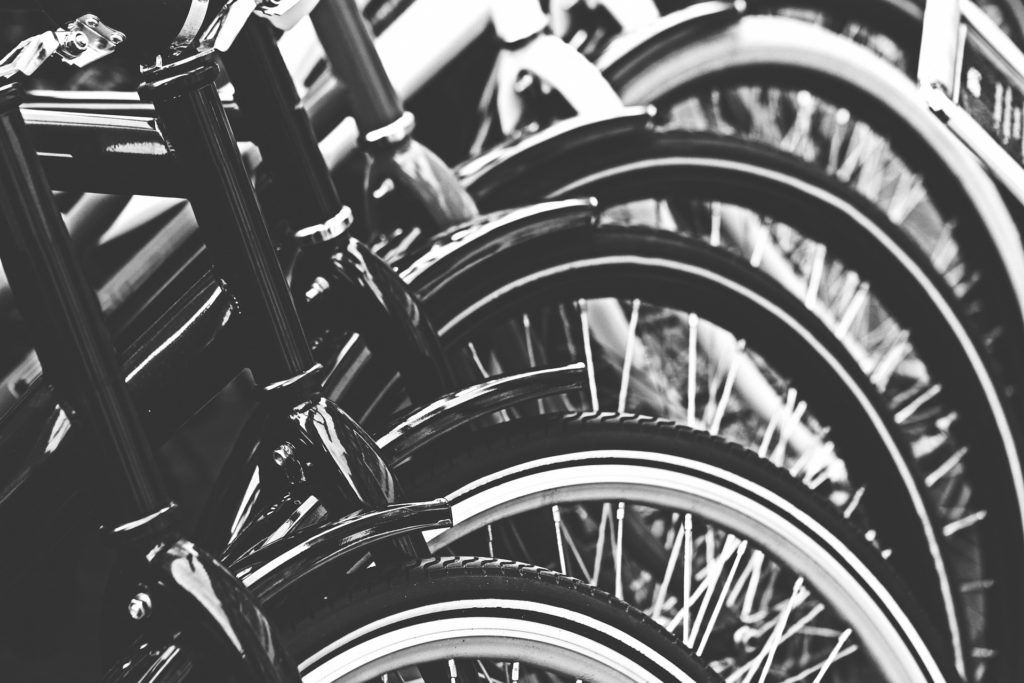
There’s a new kid on the block…or should I say, bike path. It’s the electric bike, or E-bike, which everyone and their mother seems to be purchasing in Santa Barbara and beyond, particularly during this last year of Covid quarantine. E-bikes are especially popular with those who are not avid cyclists and want a little help when faced with hills or headwinds. They are also a great alternative to enclosed transportation since they offer low cost, energy efficient, and emission-free transportation that also has physical and health benefits.
Recognizing that E-bikes are more than just a trend, Santa Barbara has begun work on new E-bike sharing program. Manufacturer BCycle will supply 250 E-bikes and 500 docking stations at three Eastside locations (including by Trader Joe’s on Milpas Street and by the Eastside Library) and two Westside locations are in the works. Eventually, BCycle will also have docking stations on the Waterfront, Cabrillo Boulevard, and Mission.
Santa Barbara also continues to move forward on implementing its 2015 Bicycle Master Plan Update, which will include the construction of several new multiuse bike pathways for bicyclists and pedestrians. (See www.sbbike.org/sb for more detailed information). Another notable development is the Stearns Wharf Pedestrian and Cyclist Safety Improvement Project, which should be completed this February, and is part of the City’s Vision Zero Strategy designed to end severe or fatal transportation-related injuries. Among other safety improvements, the project aims to keep pedestrians and cyclists separated through the construction of a separate bike pathway entitled the “Beachway” along the heavily trafficked Cabrillo sidewalk. And for those interested in testing out an E-bike for free, the County of Santa Barbara has a program entitled The EZ-Bike Project where interested riders can borrow a bike for an hour or a long weekend. (See www.trafficsolutions.org/ezbike for details).
Notwithstanding these safety improvements, we will likely see a rise in personal injury accidents on our bike paths and streets given the growing popularity of E-bikes and these various programs. Injuries associated with E-bikes include head and traumatic brain injuries; broken bones; back and spinal issues; and garden variety cuts and bruises. As attorneys, we need to remain knowledgeable about risks and liability as it relates to this emerging area of personal injury law. In 2015, California updated its bicycle laws to accommodate E-bikes. Like 21 other states, California sorts E-bikes into three classifications based on top speeds and whether pedaling is a necessary function. Class 1 is for pedal assist with a maximum of 20 mph – great for bike lanes, bike paths, roads or anywhere you would ride a traditional bike. Class 2 is equipped with a throttle that provides a boost without pedaling and stops assisting at 20 mph. Class 3 is bikes are equipped with a speedometer and only assist until the bike reaches 28 mph (the maximum speed allowed by law) and is an excellent choice for commuters. (See Cal. Vehicle Code Section 312.5(1)-(3)). As of 2017, all E-bikes in California are required to have a label that describes its type, top assisted speed, and motor wattage. (See Cal. Vehicle Code Section 312.5(c)).
For the most part, E-bike riders are subject to the same rules and legal requirements that apply to people riding traditional bicycles when it comes to speed, proper passing, following local traffic laws, obeying posted speed limits, yielding to pedestrians, riding with the flow of traffic, and other state and local ordinances. (See generally Cal. Vehicle Code Sections 21200 et seq). And because E-bikes are classified as bicycles (as opposed to motor vehicles), riders do not need to be licensed, registered, or carry any form of liability insurance. State laws requiring helmets for E-bikes users less than 18 years old similarly apply. (See Cal. Vehicle Code Section 21212).
There are, however, certain laws that are specific to E-bikes. For example, all E-bike operators need to be 16 years or older and all Class 3 riders must wear a helmet regardless of age. (See Cal. Vehicle Code Section 21213). Class 3 E-bikers are not allowed on any “multi-use” bicycle paths or trails, bikeway, equestrian trail, or hiking or recreational trail because they can go up to 28 mph, which poses significant dangers to families walking, joggers, and young children who may be new to riding. (See Cal. Vehicle Code Section 21207.5). All classes of E-bikes, however, can utilize properly designated bike lanes on public roadways. It should be noted that each city and county in California has its own rules about riding bicycles, including E-bikes, on sidewalks. Here in Santa Barbara “no person shall ride a bicycle on any sidewalk except at a driveway or on a designated bikeway.” (See SBMC 10.52.130). It should also be noted that certain hiking and mountain biking trails, such as the popular Romero Canyon trail, do not permit any type of E-bike, so be sure to check out signage at the various trailheads to see what is permitted or not.
E-bikes are clearly here to stay, as their demand and appeal has skyrocketed in recent years for a variety reasons: they work for recreation, for fitness, and for commuting. Santa Barbara has recognized that E-bikes are more than just a passing trend and, as noted above, is actively supports this “green” form of transportation with its collaboration with BCycle sharing program and EZ-Bike test ride project. How this all plays out in our community remains to be seen. As community members, we should remain optimistic and applaud our City and citizens for embracing this new “green” mode of transportation. As attorneys, we should remain vigilant to the safety and emerging legal issues it presents.